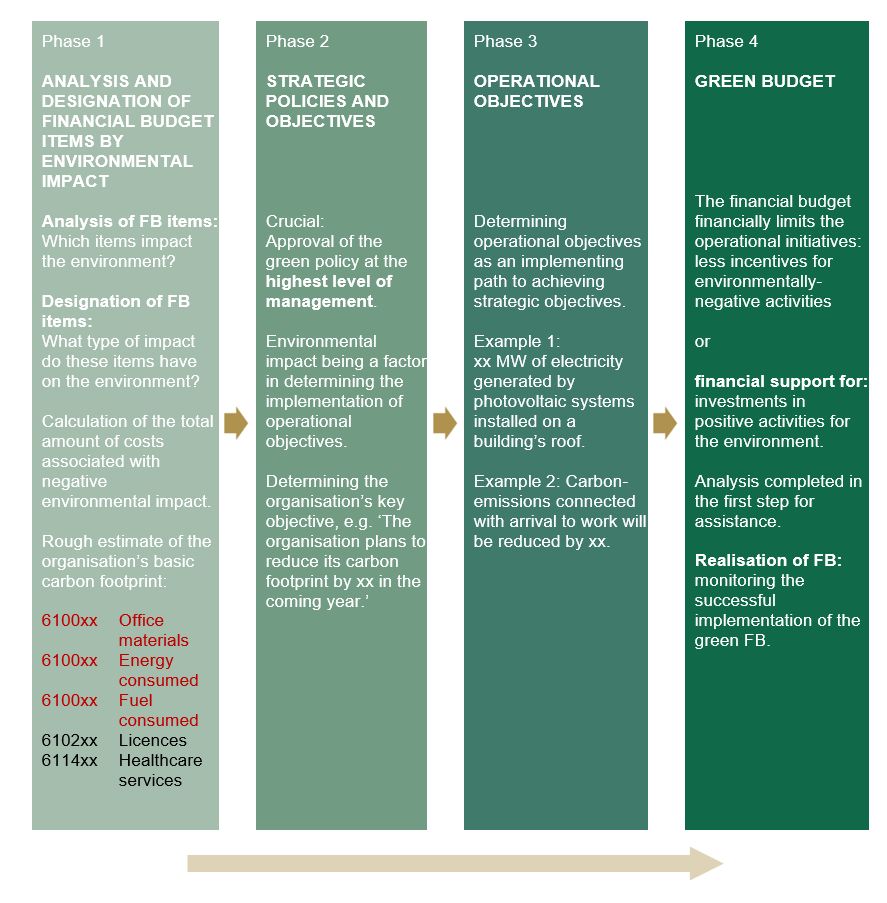In the context of environmental catastrophes in recent years, the seeking of ways and instruments that could help economies function with less environmental burdens and support more sustainable operations is being pushed to the forefront. One of the tools discussed more and more frequently by the general public and in professional circles is a ‘green budget’.
Despite the frequent use of these terms, very little room in literature is earmarked for the process of drafting a green budget, particularly at the level of an organisation, with greater emphasis being given to state budgets. The OECD defines ‘green budgeting’ as a budgeting system that balances the cost segment against the revenue segment, taking into account climate objectives, and whose environmental impacts are positive.
A green budget enables decision-makers to make a simpler assessment of the environmental consequences of their budgetary policies. The operationalisation of the implementation process at the level of companies and other organisations is more or less left to the originality of the person drafting the financial budget. Perhaps, precisely due to lacking literature and concrete proposals for this area, the green financial budget as a tool is losing its operational power to change how organisations operate.
Key phases of the path to an organisation’s green financial budget can be simplified as follows:
- an analysis of costs and their specification by environmental impact;
- the definition of a clear and measurable green strategic objective;
- the setting of annual operational objectives and activities to achieve green strategic ambitions;
- the definition of a green financial budget by securing the resources required to achieve green objectives (and limiting the activities that have negative impacts on climate with a smaller scope of the available resources).
In the first phase, an organisation performs a cost analysis and identifies cost items that most burden the environment. By identifying these costs, an organisation gets an overview of the processes that cause these costs and that will become the focal point of the green transformation.
The next step includes the definition of a strategic objective that sets a vital priority in the operation of an organisation regarding environmental issues. Practice has shown that organisations are successful in their green transformation if their highest level of management (management board, directors, etc.) actively supports environmental objectives. The measurability of the objectives is important. However, organisations are left with the choice of setting the relevant criteria. Reduction in CO2 emissions is certainly one of the most frequently used quantitative objectives. An appropriate goal in seeking easily attainable simplifications is also a reduction in the scope of costs after assessing how much CO2 emissions are caused by one unit of costs for financing non-environmentally friendly activities.
The third phase of implementation is especially important: definition of operational objectives at the level of individual processes and the organisational units that operate these processes. We specifically emphasise the services of organisations, primarily from the banking and insurance sectors, which are labour-intensive and can thus reduce their carbon footprint by changing the way they perform key business processes. As was evident during the pandemic, causal impacts arising from an increased scope of work from home, in the context of an appropriate organisation and IT infrastructure, can facilitate an environmentally-friendly operation.
The fourth phase focuses on upgrading the business plan into a green financial budget. The defined objectives are supplemented by an assessment of required resources evaluated in financial terms. The financial budget is an effective tool which through financial constraints and incentives facilitates the implementation of environmental objectives. An organisation directs its operations towards achieving the strategic objectives at the annual level through the process of drafting a financial budget. Constraints on environmentally less-desired costs that the financial budget causes have an immediate impact. By observing the realisation of a financial budget, an organisation monitors the achievement of environmental objectives, and also the realisation of investments that support future reductions in CO2 emissions. The costs of transitioning to greener operations are also quantified, which is important in terms of ensuring the transparency of organisations and companies. The main advantage of a green budget is that it relies on a generally established tool used to pave the way for an organisation’s operation, which improves the efficiency of its operation and reduces implementation costs.
Diagram 1: Graphic illustration of key phases on the path to the organisation’s green financial budget
Več na to temo je na voljo v publikaciji Zeleni načrt v organizaciji.

